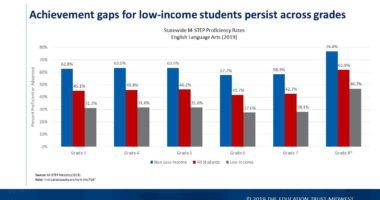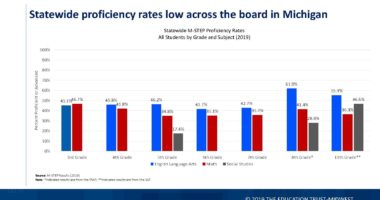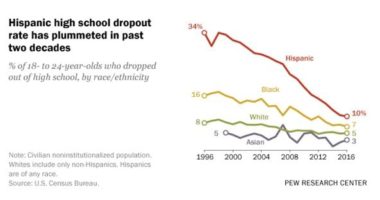Leaders call on state to stay the course on M-STEP
Michigan needs to stay the course with M-STEP
Results from the Michigan Student Test for Educational Progress released August 30 should remind us how critical it is for Michigan to provide honest and transparent data on student learning and school performance, according to Amber Arellano, executive director of The Education Trust-Midwest.
Continuing to use a high-quality end-of-year assessment is essential to providing reliable information that can help improve classroom instruction, accelerate progress for students and make Michigan a top ten education state, she said.
While the results show little improvement over 2015, “The good news is that Michigan students and teachers are rising to the challenge of taking this more rigorous assessment,” Arellano said. “Unfortunately, the Michigan Department of Education is sending mixed signals to students, parents and educators, as they flirt with the idea of moving to a different state standardized test. Students and teachers need stability and everyone – especially parents and policy makers – deserves honest and reliable data. Changing tests again would put our schools into greater turmoil and prevent transparency for years.”
M-STEP scores will likely improve over the next few years, based on the experience of other states that have introduced more rigorous assessments, as students and teachers become more familiar with and are better supported on Michigan’s higher academic expectations.
“After asking them to do much more in recent years, our students, teachers and schools now need stability and certainty so that they can continue to transition to this new assessment,” Arellano said.
Click here for details on Michigan’s 2016 M-STEP results.
Schools can be part of the solution to ‘brain drain’
In Michigan, as well as in other states, we have seen many top students leave the state when they reach adulthood.
A recent post on Politico describes new research, presented last month at the American Sociological Association meeting in Seattle, that documents the depth of the problem.
The research finds “that top performers in high schools are more likely to move away – and end up living in an “innovative” labor market, marked by a higher share of college-educated residents driving growth and attracting ever more highly skilled workers.”
“The best and brightest . . . might or might not stay,” according to Chandra Muller, a sociology professor at the University of Texas at Austin and author of the study. “But they always land on their feet in the sense that they always land in the places that have other best and brightest.” who was lead researcher for the work, tells Morning Education.
According to the Politico story, written by Kimberly Hefling, Muller and her colleagues recognize the role schools can play because of a correlation between greater success in high school and moving away – meaning high school work makes a difference. “This is really showing the ways that schools can be part of the solution,” Muller said.
Click here for the full article.



